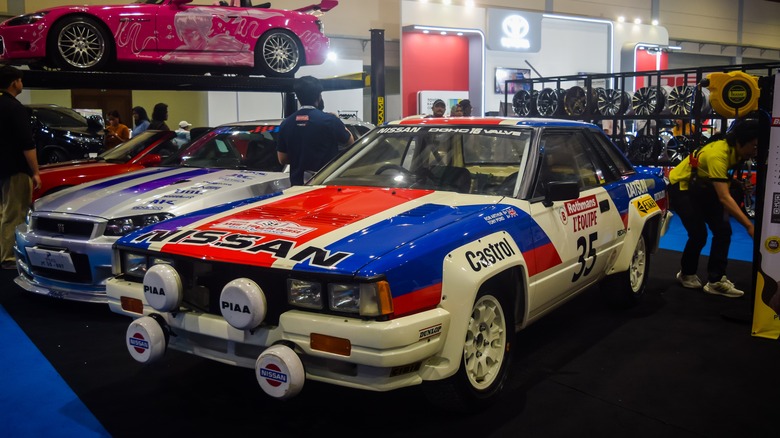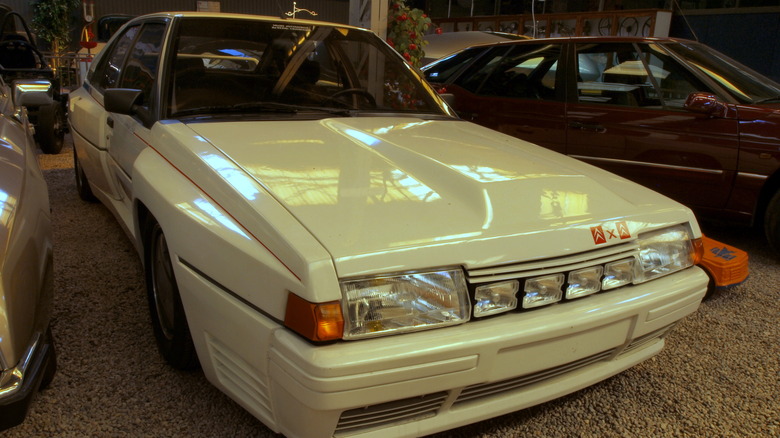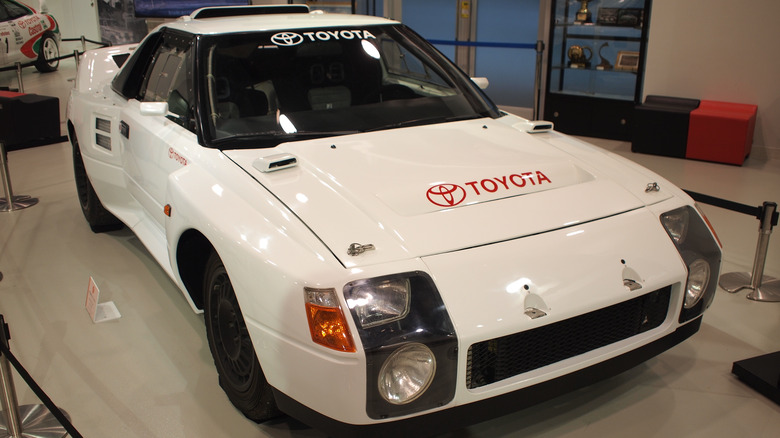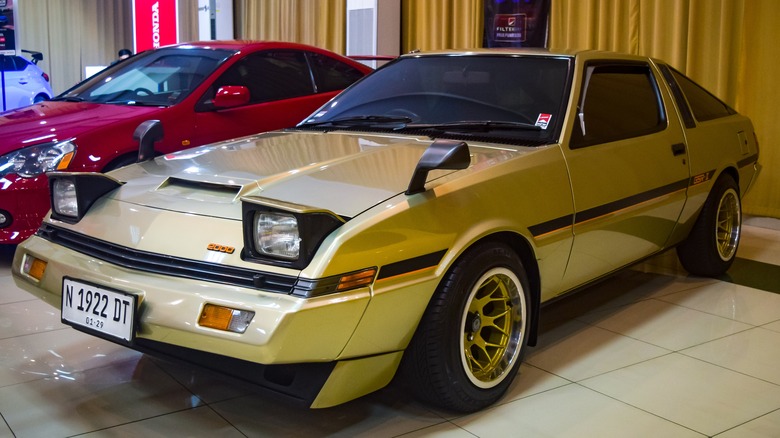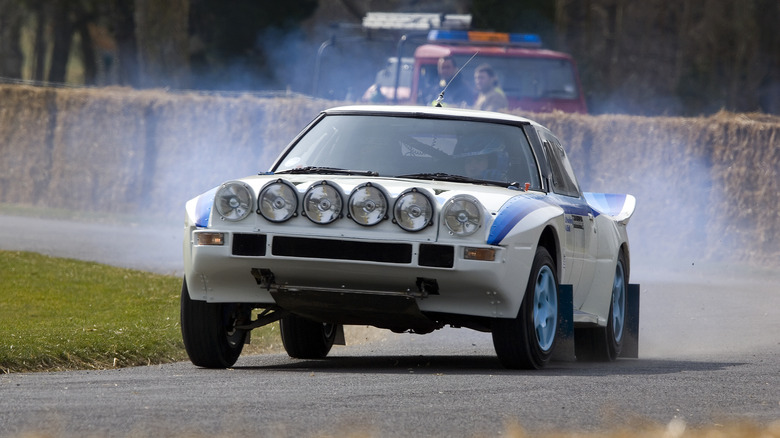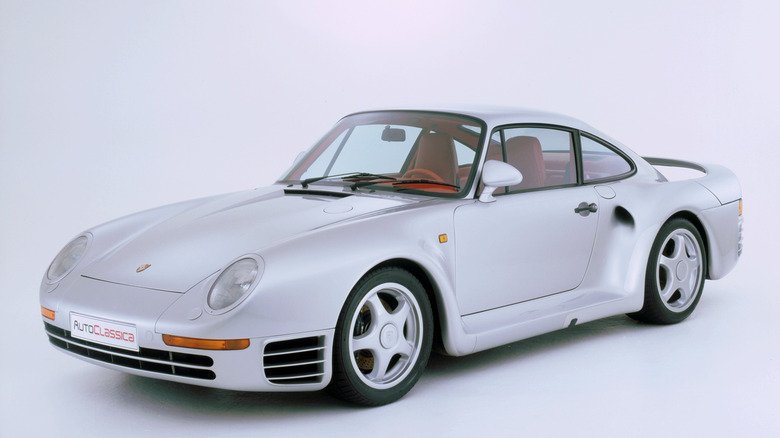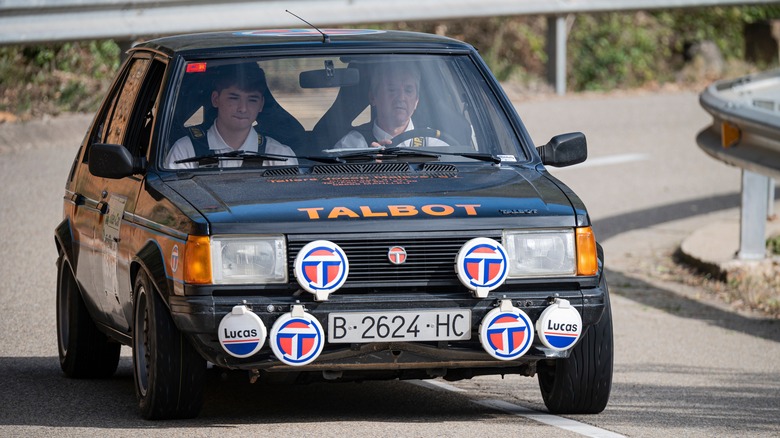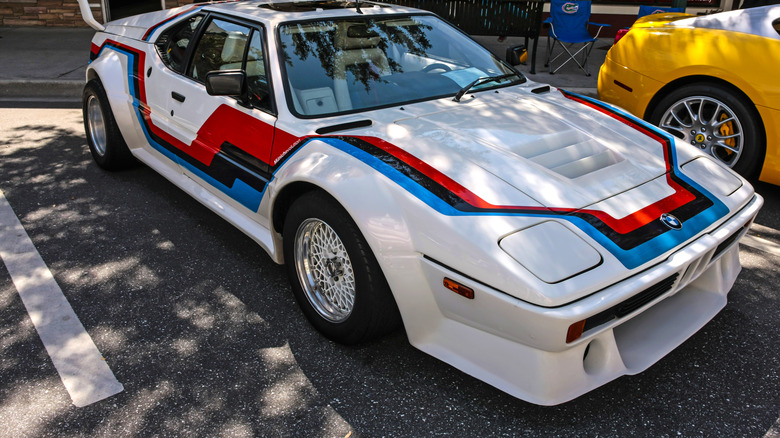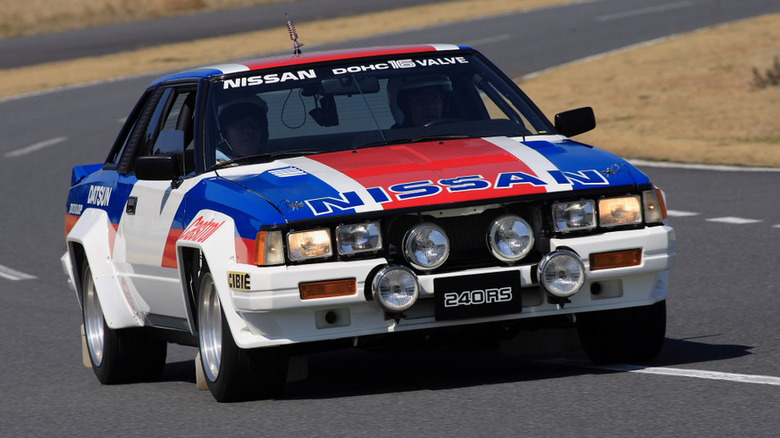8 Iconic 80s Cars That Missed Their Shot At Group B Glory
Rally racing's roots trace back to the late 1800s, and today, it stands as one of the ultimate motorsport disciplines that don't take place purely on the tarmac, alongside rallycross and rally raid. The World Rally Championship has been going on for decades, and over the years, we have seen countless machines and categories come and go, from the plucky classic Minis to the hybrid monsters of today's WRC.
There is only one group of cars from rally's history that most would consider to be absolute royalty: Group B. Formed in the early 1980s, Group B was essentially the let-your-hair-down group. There were virtually no restrictions or regulations, and manufacturers were allowed to push their cars to insane power outputs, more than 700 horsepower in some cases.
Group B gave birth to some of the most iconic cars in the history of rallying, like the Lancia Delta S4, the Peugeot 205 T16, the notorious Ford RS200, and of course, the all-conquering Audi Quattro and Lancia 037, the latter being the last ever 2WD car to win the championship. Other automakers wanted to join in on the Group B action too, but it didn't go quite as well as they hoped it would.
Citroen BX 4TC
Although this has changed somewhat nowadays, back in the 20th century, Citroen had a knack for doing things quite differently from most other automakers. Quirky styling, magic carpet-like hydropneumatic suspension, and a power-adjustable armrest. The French automaker had a lot of success during the '60s and '70s racing the super innovative DS and the lovable 2CV, so with the arrival of Group B, Citroen decided to give it another shot.
Using the compact BX as the base, Citroen created the BX 4TC, a car which we're certain comes up in the dictionary when you look up period correct '80s design. The quad auxiliary lights in the front grille, the aero hubcaps, the noticeable fender flares, it's all there.
On the rally stage, the car bore the name BX 4TC Evo, and it pushed 380 horsepower, which was plenty for the class that it competed in. Sadly, after just one season, it was clear that the BX was not ready for prime time, despite the fact that Citroen had already built 200 road-going examples to homologate it. What's more, Group B was banned a year after the BX first went on the track. Mercifully, Citroen's future WRC efforts fared much, much better.
Toyota 222D
Toyota has been pretty successful in rallying, being the only current automaker to still do homologation specials with the GR Yaris. The notorious Celica GT-Four and other versions of the Yaris are very well known, but Toyota also wanted a crack at Group B, which eventually became Group S.
Technically, Group B and Group S are not the same thing, but Group S' rules are very similar to Group B, the only difference being slightly stricter regulations. The 222D was Toyota's idea of the ultimate rally car in the '80s, with underpinnings from the MR2, a car that should definitely (and all but certainly will) come back.
Power on the 222D came from a 2.1-liter turbocharged four-cylinder which was capable of well over 700 horsepower. That's plenty by any conceivable standards, but it's really a lot when you realize that the 222D barely tickled the scale at 1,653 pounds. These stats would have worked fine with Group B regulations, but they went against all the rules of Group S, which shadowed any chance of the 222D succeeding on the rally stage. The Celica GT-Four would eventually come in to save the day a few years later.
Mitsubishi Starion 4WD Rally
Mitsubishi and rallying go together like apples and cinnamon. Well, at least that was the case at one point. Mitsubishi's Lancer and Evo did some great numbers in world rallying, and they're the two vehicles that everyone associates with Mitsubishi's rallying success. At one point, Mitsubishi wanted to enter the Starion sports car into the competition as well.
The Starion, which came to be known as the Chrysler Conquest in North America, was Mitsubishi's idea of a RWD sports car, a concept that it would never revisit afterwards. The Group B Starion would have been 4WD, and Mitsubishi was hoping the low weight figure would be the Starion's advantage over its competitors.
Unfortunately, Mitsubishi did not have time to finish homologating the Starion before Group B was consigned to the history books, and it never got to compete in the Group B standoffs. Even though the world was never blessed with a Group B Starion, Mitsubishi's fortunes went way up after the Starion's untimely demise, as the days of the Galant and Lancer Evo followed right after.
Mazda RX-7 (FB)
Throughout the 80s and 90s, Mazda went on to prove to the world that the rotary can be a compelling powertrain for race cars, which it eventually succeeded in after the 787B took home the LeMans win in 1991. A rally entry makes a lot of sense, but Mazda wasn't really interested in competing with the FB RX-7, leaving the job to Mazda's European rally team.
The team gave the FB RX-7, which actually carried the codename SA, a peripheral ported rotary with 300 horsepower, huge fender flares, and many, many driving lights on the front, although the pop-ups sadly had to be sacrificed.
While a few of these beasts did reach the circuit, they had the same issue as a lot of other Group B cars. It's a bit of a pattern: the RX-7 came along too late to enjoy any sort of success in Group B before the group was retired altogether.
Today, it's believed that there are only 19 Group B-ready RX-7s in the world, and their whereabouts are up in the air. How awesome would it have been if Mazda won the world rally championship with a rotary? It's too late to answer that question, but it definitely would have been one to remember.
Porsche 959 Gruppe B
Easily one of the most impressive cars of the 1980s, not just in terms of supercars, but as a whole. Everyone knows the stories of the Porsche 959, including how thanks to Bruce Canepa's hard work, the show or display exemption for importing cars to the States was practically invented. Right from the get-go, the Porsche 959 was designed to excel at one thing: off-road racing.
This is proven by its many off-road-ready features, including the Gëlande crawler gear and the height-adjustable suspension. The Rothmans-branded 959 did a fantastic job at rally raid, but, no one will be surprised to hear that the 959 was also supposed to tackle Group B at one point.
The Gruppe B prototype, as it was known, retained some of the production 959's forward-thinking features, like the 2.9-liter flat six with hybrid water and air cooling, and the incredible torque vectoring AWD system. It also featured different aerodynamics, and specially designed wheels that essentially stopped the tires from disintegrating off the rims in the event of a puncture. Like the others, it didn't arrive on time.
Talbot Lotus Horizon
Talbot and Lotus' relationship goes back to before the Horizon, as the two also worked together on the Sunbeam, a 150 horsepower rear-driven hot hatchback that served as an alternative to the Golf GTI, though obviously, nowhere near as successful. Talbot and Lotus' next project was turning the Horizon hatchback into a Group B machine.
They settled on a mid-engine layout. The rear seats and cargo area on the Horizon were to be taken up by an entire Lotus Esprit drivetrain wholesale, including the turbo four-cylinder and the five-speed manual transmission.
The resulting Horizon has one of the saddest fates in Group B's history. Talbot was the result of the PSA Group purchasing and rebranding what was left of Chrysler Europe. Citroen and Peugeot were under PSA's wing, and both of those were also putting together their own Group B efforts, which would end up being the BX 4TC and the 205 T16, the latter of which was highly successful. The Audi Quattro also arrived before the Horizon had a chance, so Talbot decided it wasn't really worth a shot anymore.
BMW M1
Yes, really, that BMW M1. The automaker's first mid-engine supercar, the first full-on M car, and a car with a story everyone finds hard to believe. On the tarmac, where it was known as the M1 Procar, BMW's first crack at a supercar did quite well. The Bavarians also tried to enter it into the World Rally Championship and Group B, but that didn't fare very well.
It's even more confusing that no one remembers the M1 when you remember that it competed at the same time and one of the same tracks as that year's title winner, the Lancia 037. The Group B M1 used a 3.5-liter I6 putting out a solid 430 horsepower.
While BMW was not the team behind the M1, it did offer to sponsor the ORECA team that was running it that year. While it did okay on the tarmac stages, it never saw a gravel stage, due to its width and the simple fact that the M1 was never designed to go anywhere except a proper racetrack. It was doomed from the onset.
Nissan 240RS
A prevalent car design trend in the 1980s was right angles and boxy shapes, and the Nissan 240RS takes that and runs with it. Believe it or not, the 240RS is actually based on the S110 Nissan Silvia, a generation of the car no one talks about, as the S13, S14, and S15 always take center stage.
Power came from the FJ24, a confusingly named 2.3-liter naturally-aspirated four-banger. Curiously, it was carbureted rather than fuel injected, even though most of Nissan's race cars were already running fuel injection at this time. On paper, though, the 240RS doesn't appear to have the numbers to kick it with the Group B darlings, putting out only 237 horsepower which went to only the rear wheels.
Nissan properly homologated the 240RS, building 200 road-going examples, most of them having the steering wheel on the left side. While the 240RS was much easier to maintain and keep running than some of the other competitors on the grid, it simply couldn't stand a chance against them, and the banning of Group B ultimately sealed the 240RS' fate as a forgotten footnote in Group B's history.
